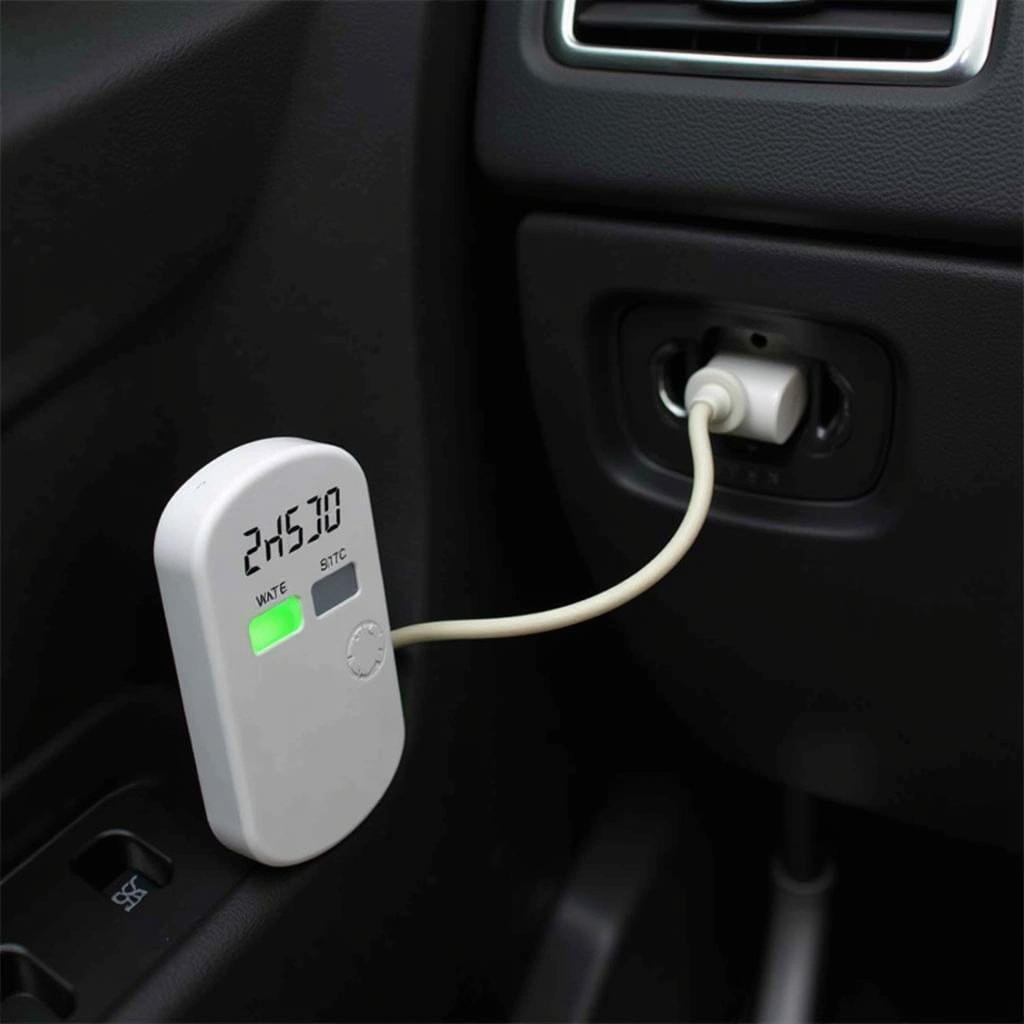Carbon monoxide poisoning from a car engine problem is a serious, potentially fatal issue. Understanding the causes, symptoms, and solutions is crucial for any car owner, mechanic, or automotive technician. This article will delve into the complexities of car engine problems that lead to carbon monoxide leaks, empowering you with the knowledge to prevent and address this dangerous situation.
What Causes Carbon Monoxide Leaks in Cars?
A car’s engine produces exhaust fumes, which contain carbon monoxide, a colorless, odorless, and highly toxic gas. A leak in the exhaust system is the primary culprit for carbon monoxide entering the cabin. Several factors can contribute to these leaks:
- Rust and corrosion: Older vehicles are especially susceptible to rust and corrosion, which can create holes in the exhaust system.
- Damaged exhaust manifold: Cracks or holes in the exhaust manifold can allow carbon monoxide to escape.
- Faulty catalytic converter: A malfunctioning catalytic converter can lead to increased carbon monoxide production.
- Loose or damaged exhaust pipes and muffler: Vibrations and impacts can damage or loosen components of the exhaust system, creating leaks.
- Blocked tailpipe: A blocked tailpipe can cause exhaust fumes, including carbon monoxide, to back up into the vehicle.
Recognizing the Symptoms of Carbon Monoxide Poisoning
Carbon monoxide poisoning can be difficult to detect due to the gas’s invisible and odorless nature. However, being aware of the symptoms can save lives. Common signs include:
- Headache: Often described as a dull headache or pressure in the head.
- Dizziness and weakness: Feeling lightheaded, unsteady, or experiencing a general lack of strength.
- Nausea and vomiting: Feeling sick to the stomach and potentially throwing up.
- Shortness of breath: Difficulty breathing or feeling like you can’t get enough air.
- Confusion and disorientation: Difficulty thinking clearly, feeling lost, or having trouble concentrating.
- Loss of consciousness: In severe cases, carbon monoxide poisoning can lead to fainting and even coma.
Diagnosing a Car Engine Problem Leading to Carbon Monoxide Leak
If you suspect a carbon monoxide leak in your vehicle, it is crucial to have it inspected by a qualified mechanic immediately. They can perform a variety of tests, including:
- Visual inspection: A mechanic will thoroughly examine the exhaust system for any visible signs of damage, rust, or leaks.
- Exhaust system pressure test: This test helps identify leaks by pressurizing the exhaust system and checking for pressure drops.
- Carbon monoxide detector: Using a specialized detector, a mechanic can measure the carbon monoxide levels inside and around the vehicle.
 Mechanic Inspecting a Car’s Exhaust System
Mechanic Inspecting a Car’s Exhaust System
Fixing Car Engine Problems Related to Carbon Monoxide
Repairing a carbon monoxide leak depends on the source and severity of the problem. Common solutions include:
- Patching small holes: Minor rust holes can sometimes be patched temporarily with exhaust sealant or tape.
- Replacing damaged components: Severely rusted or damaged parts, such as the exhaust manifold, pipes, muffler, or catalytic converter, will need to be replaced.
- Welding: Cracks in the exhaust system can often be repaired by welding.
Remember, any repair involving the exhaust system should be performed by a qualified mechanic. Improper repairs can worsen the problem and put you at further risk.
Preventing Carbon Monoxide Poisoning from Your Car
Prevention is always better than cure. Here are some preventative measures you can take:
- Regular maintenance: Have your car’s exhaust system inspected regularly, especially in older vehicles.
- Address rust promptly: Don’t ignore signs of rust on your exhaust system. Have it repaired or replaced as soon as possible.
- Never run your car in an enclosed space: Even with a seemingly functional exhaust system, running your car in a garage or other enclosed area can lead to dangerous carbon monoxide buildup.
- Install a carbon monoxide detector in your car: This can provide an early warning of a leak and potentially save your life.
 Carbon Monoxide Detector Installed in a Car
Carbon Monoxide Detector Installed in a Car
“Regular inspections are key,” says John Smith, a certified master mechanic with over 20 years of experience. “Catching a small exhaust leak early can prevent a much larger, more expensive, and potentially dangerous problem down the road.” He adds, “Don’t underestimate the importance of a functioning catalytic converter in reducing carbon monoxide emissions.” Another experienced mechanic, Jane Doe, emphasizes the dangers of ignoring symptoms, stating, “If you suspect carbon monoxide poisoning, get fresh air immediately and seek medical attention.”
Conclusion
A car engine problem leading to a carbon monoxide leak is a serious issue that requires immediate attention. Understanding the causes, symptoms, and solutions can protect you and your passengers from this silent killer. Regular maintenance and prompt repairs are crucial for preventing carbon monoxide poisoning. For further assistance or if you have any concerns about your vehicle’s exhaust system, contact AutoTipPro at +1 (641) 206-8880. Our office is located at 500 N St Mary’s St, San Antonio, TX 78205, United States. We are here to help you keep your car safe and running smoothly.




Leave a Reply